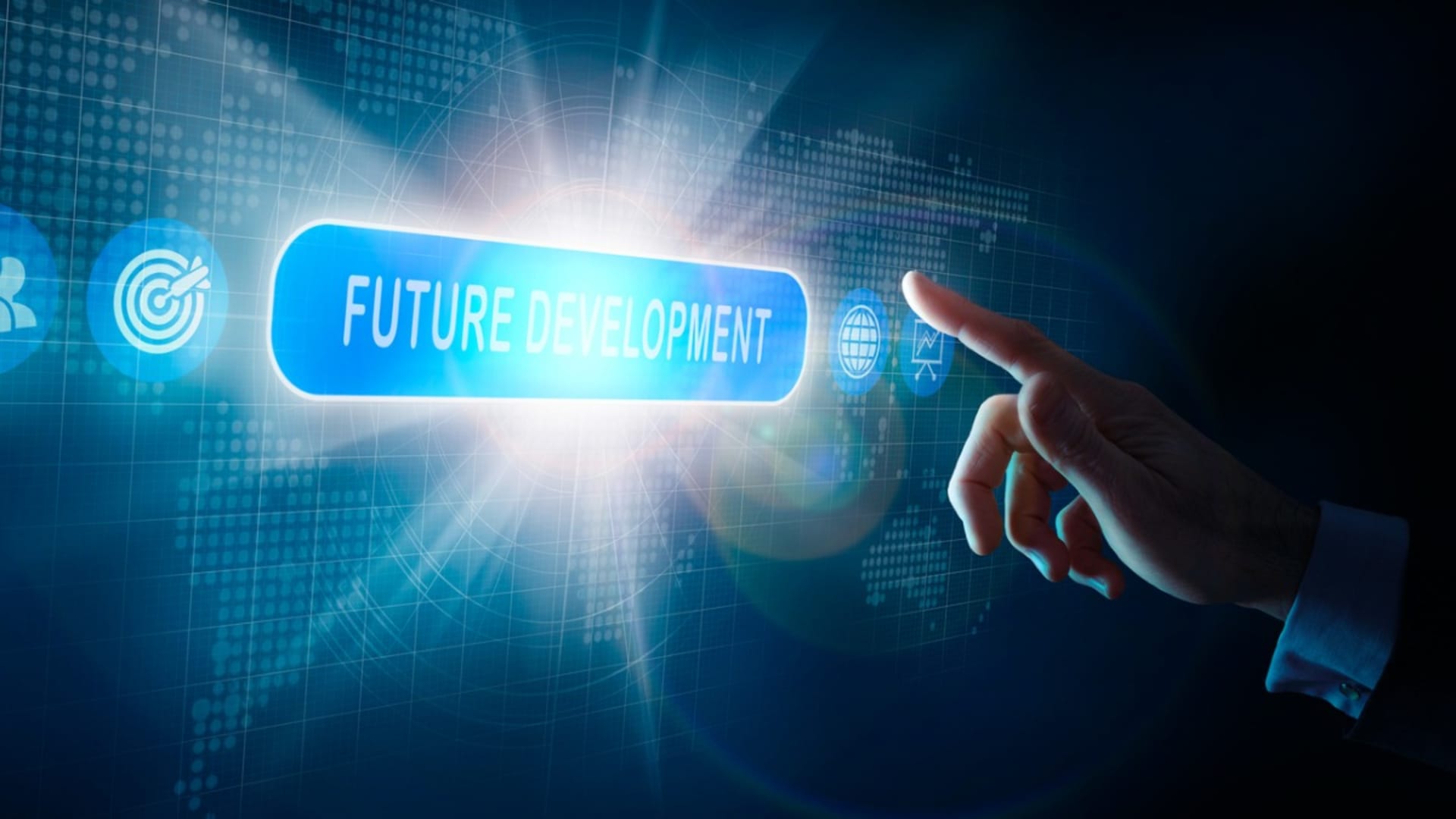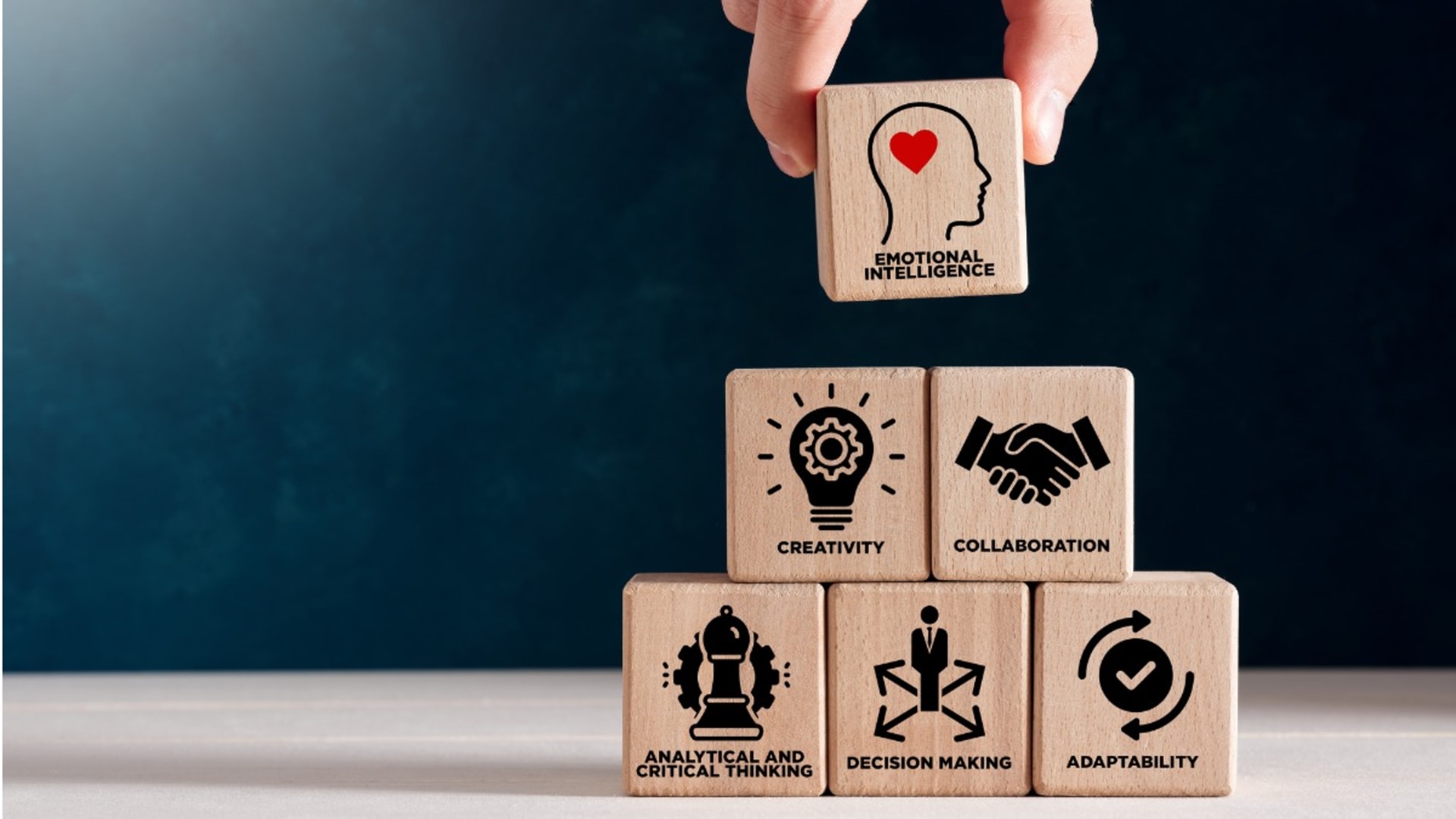A product team gathers information from the client about their needs, then designs, creates, tests, and promotes the product based on those needs. The team consists of people who are adept at these roles and work together to ensure the best possible outcome for the client.
Product development software provider Aha! notes that good product development teams share some common traits. The first is transparency, which reflects open communication with no hidden agendas. Effective product development teams are also curious, striving to always understand the “why” behind product requirements. These teams are also empathetic toward each other and the clients or customers they are developing for.
Further, high-functioning product development teams are creative—using out-of-the-box thinking to solve problems—yet pragmatic, looking for practical solutions that will deliver the most value for the team, the client, and the company. In the following sections, we examine the function of product development teams, various team structures, and how to ensure teams do their best work.
What Is Product Development?
Product development is the process of creating a new product from idea to launch and beyond. The product development cycle includes the following stages.
- Define goals. The first step in product development is to define what the final product should achieve. Is it to solve a business problem, such as an enterprise management system, to help streamline operations? Is it to produce a budgeting app that will be helpful to customers? Knowing what the application should do is critical for ensuring project success.
- Plan. The next step is to get more detailed about the stated goals. For example, what features will the budgeting app have? How will the team make it easy to use? This stage is also the right time to talk about resources. What team members will be needed to develop the product, and how much time will be needed to complete the project?
- Design. The design stage involves creating a prototype of the application so stakeholders can start to see how it will operate in real life. The prototype can also be presented to potential end users to do some early testing and determine any major flaws that should be corrected.The plan and design phases are critical. A recent Forbes Business Council post notes that one of the keys to success for product development teams is not jumping into engineering too soon. It states, “We often see passionate people envision a finished product before development even starts. This is problematic when there are misconceptions related to what the end user cares about and how they will interact with the product.”
- Build. Next, developers take information from the previous stages and begin coding accordingly. Developers choose from a variety of languages, depending on the specific needs of the project. They may work according to a methodology like Agile to ensure an efficient and streamlined workflow.The Forbes Business Council post notes that successful development teams often use rapid development cycles, stating, “To be successful here, you must be prepared to prototype frequently throughout the development to test various aspects of the product, such as configuration, software interface, [and] functionality.”
- Test. When an initial version of the application is ready, it must be tested to ensure it works according to the initial requirements and according to user needs. Different types of testing may be performed, including functional testing, which ensures the application meets functional specifications, and performance testing, to ensure smooth performance.
- Launch. After all, testing has been completed; the application may be considered ready for its intended use. If that use includes sale to companies or the general public, the project requires a product launch. Activities include making the product available for sale and promoting it in ways determined by the target market, their needs, and their habits.
- Promote. After product launch, marketers on the development team must continue to promote it to ensure continuing sales. Continued promotion might include social media posts, blogging, contests, advertising, or white paper or ebook publication. The purpose of all these activities is to draw attention to the product, generate interest, and make it easy to buy.
- Maintain. The application must be supported by the development team for an appropriate period based on the intended product lifecycle. The maintenance phase might also include continued promotion and availability of customer care functions.
Meeting Client Needs
The high-level goal of any product development team is to develop applications that meet the criteria of the client requesting the project. The client can be any of the following:
- Internal to the same company the development team works in, with the intention of using the application internally (such as a proprietary customer management program)
- Internal to the same company the development team works in, with intention of selling the application to other users (such as small business accounting software for sale)
- A separate company that hires the team to create an application the company will use for its own purposes (such as a proprietary inventory management system)
- A separate company that hires the team to create an application the company will sell to its own customers (such as a video game)
The key to meeting the needs of any type of client is to gather requirements, meaning to discuss in depth with client representatives about what features and functions the application must have. Part of this discussion is the process of prioritizing requirements according to their importance and business value. The initial list of prioritized requirements serves as a starting point for designers and should be updated and changed throughout the project’s duration.
The next stage of product development is creating an estimate for the time it will take to build the product and how much it will cost. Then, the designers start designing the product. Eventually, their efforts are handed off to the developers, who implement the design. After development, testers test the product to ensure it meets the updated requirements list. Finally, if the application is to be sold outside the company that commissioned it, marketers launch and promote the product.
Team Roles
Let’s take a closer look at the product development team roles described in the previous section. They include the following positions:
- Managers. While the product manager keeps track of the overall progress of the project, assigns tasks to others, and ensures the team has all the resources they need to complete a project, they are no more important than any other member of the team. Each one has unique skills that contribute equally to the success of the project.Product managers are the primary representatives of development teams with clients. They ensure the team is meeting deadlines and milestones, relay information between clients and team members, and take responsibility for troubleshooting any issues and ensuring all requirements are included in the final version of the application.
- Owners. Along with product managers, product owners are responsible for gathering user requirements, which are the features and functions that an application must have to be considered successful by the client. In smaller projects, the product manager and project owner might be the same person. But, for larger projects, or situations in which the company has many projects going at the same time, a product owner might be assigned to each product in development.
- Designers. Product designers are responsible for ensuring that end users of the application are able to use it seamlessly with a look and feel that is appropriate and pleasing. These professionals have deep knowledge about how applications are used and how user experience (UX) principles should be deployed. Designers often work closely with engineers to create prototypes and test products among potential users.
- Engineers. Product engineers perform the coding that actually creates the application. Engineers are responsible for including the features and functions that have been determined by product managers and owners and described by designers. Engineers have a number of working models to choose from, including the Agile approach that helps ensure problems are caught and resolved before they become bigger issues.
- Testers. Ideally, testers are individuals who are not serving as engineers on a particular project because that gives them a level of objectivity that is useful. However, engineers can serve as testers of their own applications as well. Either way, testers perform tests on the application to ensure it performs as expected.
- Marketers. No product for sale can be successful without promotion, and that is what product marketers specialize in. Prior to product completion, they prepare promotional materials, develop a promotional plan, and announce the product once it is ready. After the launch, they deploy the prepared promotional materials and continue to find potential customers and increase distribution.Even before these stages, product marketers collaborate with the other development team members, learning about the product, researching the market, and creating new ways to bring them together. This stage is critical for developing their promotional strategies, such as determining how to package the product, such as through a service or subscription.
The size of development teams varies depending on the complexity of the project. It can be just one person per role or multiple people per role, with sub-teams working on various parts of the project. More complex projects may also require additional roles, such as operations, innovation, and user experience (UX) specialists.
Team Structures
Larger product development teams can be structured in a variety of ways.
- By product or product line. While all team members are contributing to company’s success and working toward creating high-quality products, sub-teams may be established for each product.
- By product feature. Here again, all team members are working toward the same high-level goals, but sub-teams may be established based on areas of expertise for specific product features.
- By team function. Groups of team members can work independently on functions such as design, development, and marketing.
- By customer type. Teams can be established to work on projects that are for a customer segment, such as young gamers or decision-makers within a certain industry.
- By customer journey phase. Teams can be established to work on features and functions of products for specific stages of the customer journey: awareness, interest, desire, and action.
The following video offers some “rules of the road” to consider when structuring product development teams.
How to Choose the Right Team Structure
There is no one right team structure, so organizations must create teams based on the way their company is organized, its business goals, the nature of the project, and the needs of the client. Organizations in the process of determining the right team structure can ask some questions to help the process along:
- What are the goals of the project? Project goals range from creating in-house software for improving operations to developing consumer products for generating revenue. These goals require very different team dynamics and actions. For example, creating consumer products should be done with the end in mind, including how to launch, promote, and maintain the application. Thus, marketing professionals should be involved throughout.
- Who is the client for the project, and what are their needs? Whether the client is in-house or external also makes a big difference in how a project should proceed. For instance, working with an in-house client may mean also taking into consideration input from various other teams, as well as executives and other stakeholders.
- What resources are available to the development team? If the development team has everything it needs, it will be able to pursue the project without having to create workarounds or special workflows to be able to complete it on time. If a team (such as within a startup) doesn’t have an ideal situation, it may need to figure out ways to create the desired outcome within narrower parameters.
- Is there more than one team or project to be managed? Teams that are working on multiple projects have more leeway to expand into team structures such as “by product feature” or “by product or product line.” The more projects that are being worked on, the more likely it is that these structures should be considered.
How to Manage a Product Development Team
No matter what structure is selected, team leaders must provide ongoing support and guidance. This part of team operations is critical because problems that aren’t solved can cause bigger issues like product launch delays, unhappy clients, and loss of revenue or market share. Managing product development teams well is based on using some fundamental principles, such as seeing the big picture, ensuring each team member knows how they fit into it, trusting team members to use their best judgment, and being available for guidance and support.
Even the most effective product development team structure won’t work well without strong leadership. Here are some tips for ensuring the best outcomes.
- Communicate clearly. At the outset of the project, tell team members what you expect from them. Your expectations should include not just product outcomes, but also things like working hours, communication practices, meetings you would like to hold, and how to raise concerns or ask for assistance. During the project, be available and let team members know how to reach you. Give regular progress reports on both the project as a whole, and on individual team member performance.
- Trust team members. Established teams may have built trust, but new teams will take some time to create it. While trust can’t be forced, there are things team leaders can do to engender it. For example, team members who see leaders owning up to their mistakes will be likelier to do the same, creating an environment in which problems can be resolved more easily. Leaders must also have the attitude of allowing those mistakes to happen from time to time.
- Provide mentorship. While it may not be appropriate to coach team members on every aspect of their career, you can provide the right guidance to ensure they are successful with the current project and for the company in general. Such mentorship can come in the form of introducing new skills, using project challenges as teachable moments, holding one-on-one meetings, and helping team members consider what their next role might be and how to gain the skills to move into it.
Business advisor Innovation Mode further recommends that leaders inject some entrepreneurial spirit, stating, “Modern project/product managers and leads must think, feel, and act as entrepreneurs….This startup and innovation mentality must be inherited from every single member of the team.”
Replicate Past Success
As with most things in business, there is no one right way to choose the right development team structure. Companies that perform development can look to competitors, former employers, and industry advisors to find projects that turned out exceptionally well and ask, What were the elements in place to make it happen, and how can the organization replicate some of those factors?







